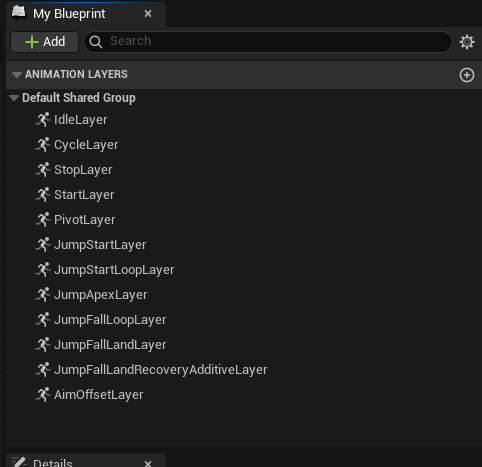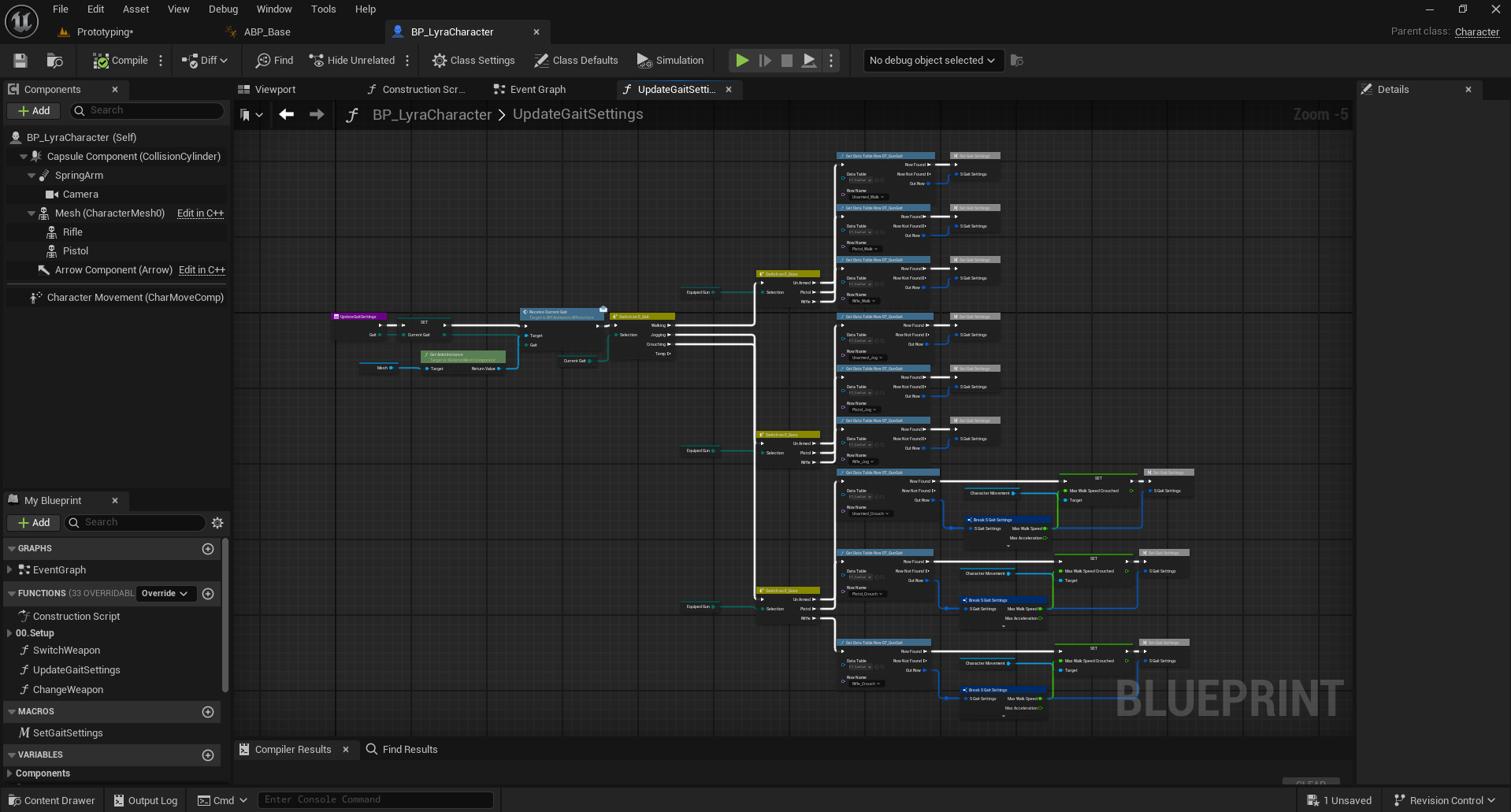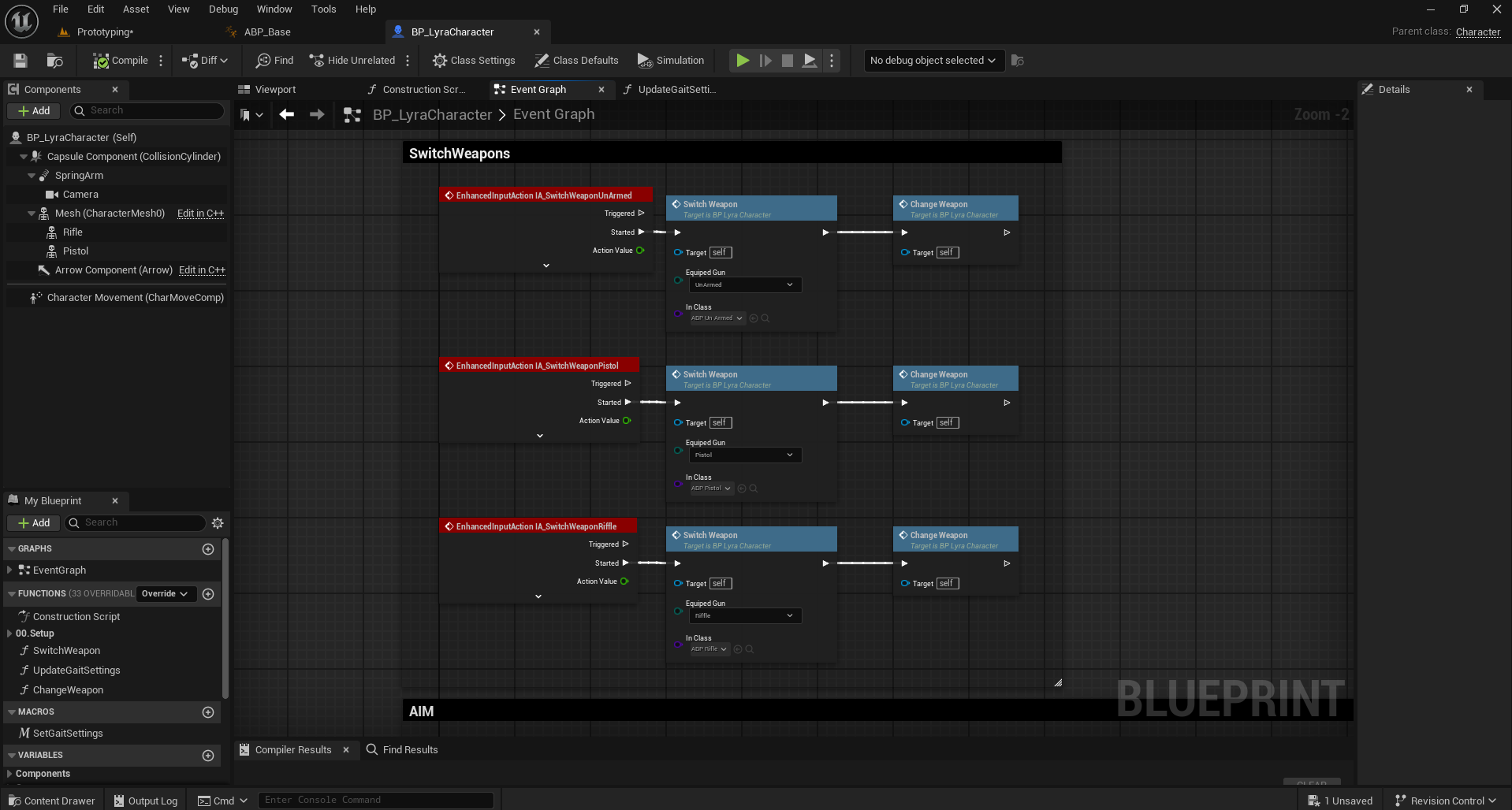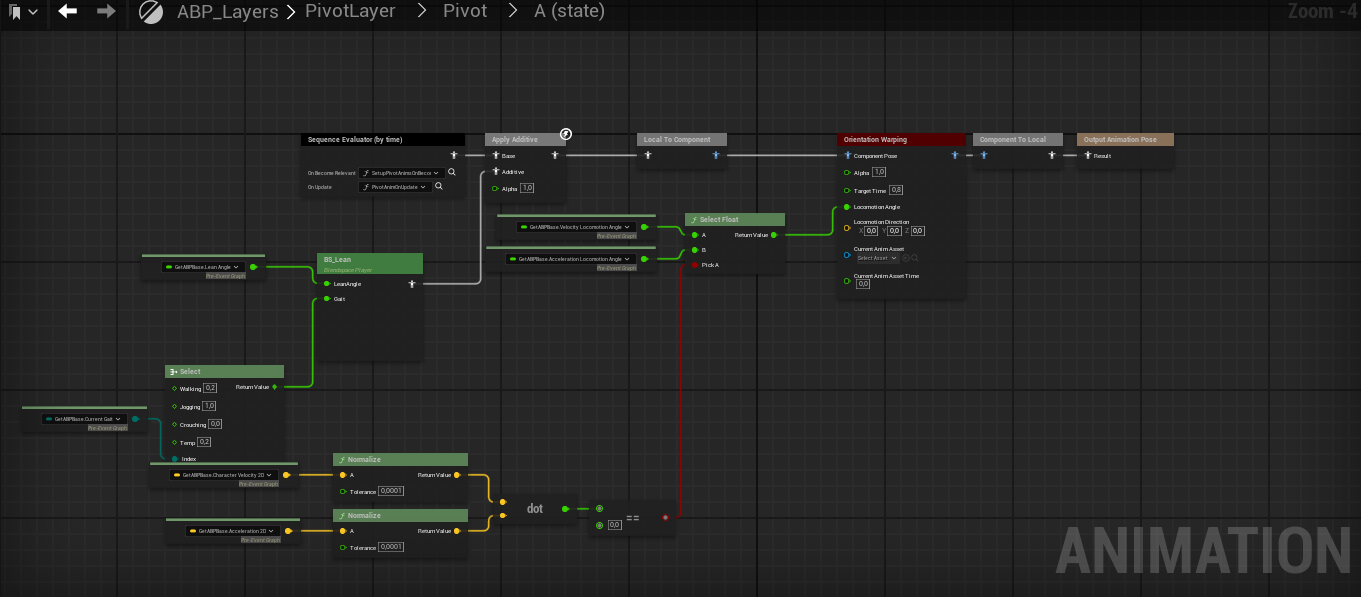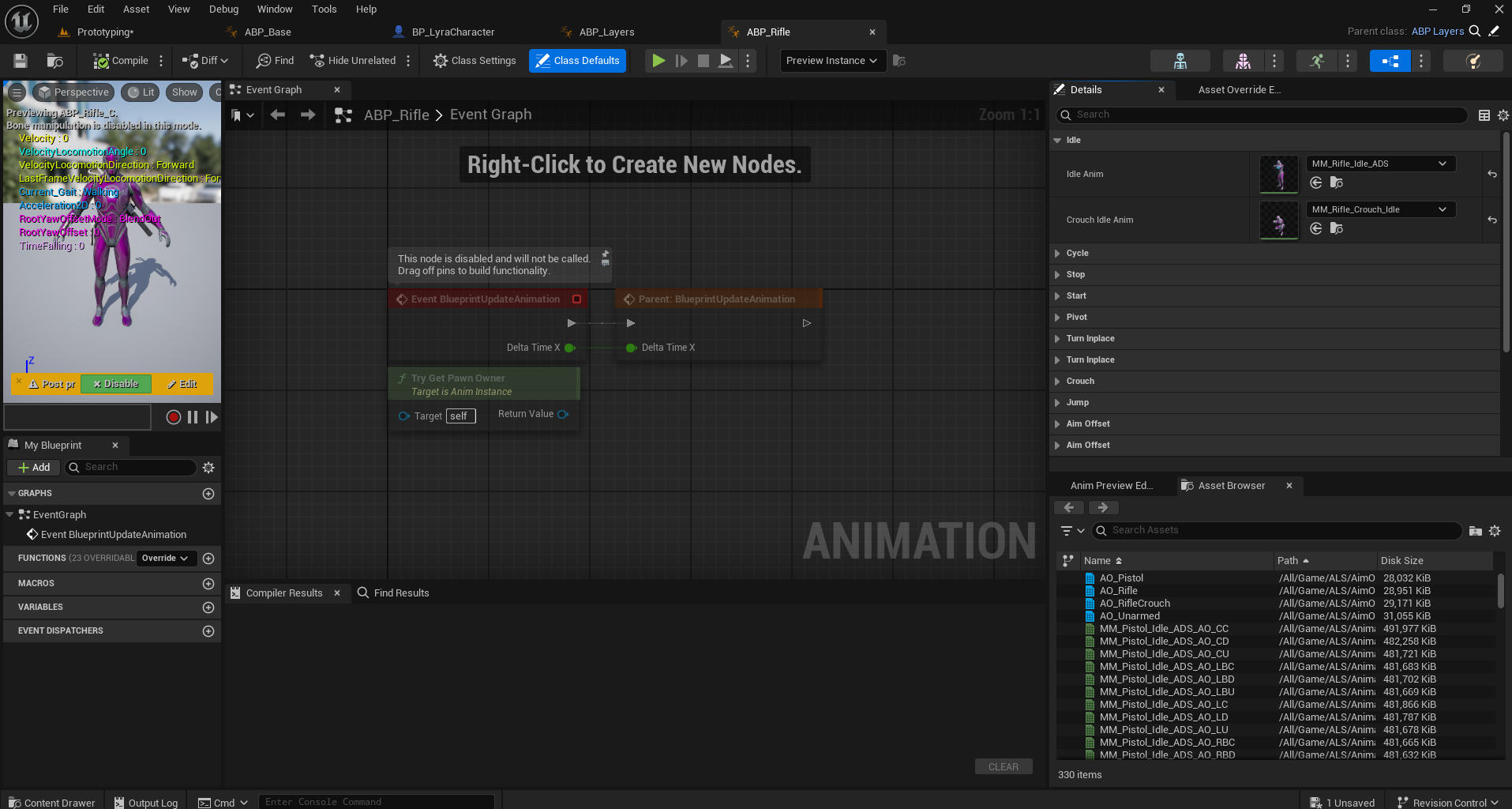Advanced Locomotion System
The advanced locomotion system I developed is inspired by the ALS project from Lyra, which I found to be particularly immersive and well-designed. By adapting their ambitious and comprehensive approach, I was able to create a version that suits my needs while staying true to the fluidity and responsiveness of the original. The goal was to replicate a realistic locomotion system with smooth transitions and detailed animation handling
Feature Details
Jogging
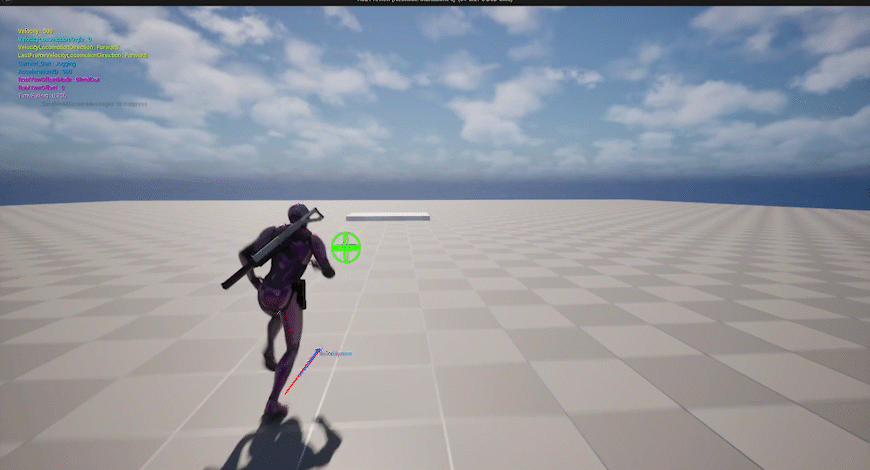
Walking
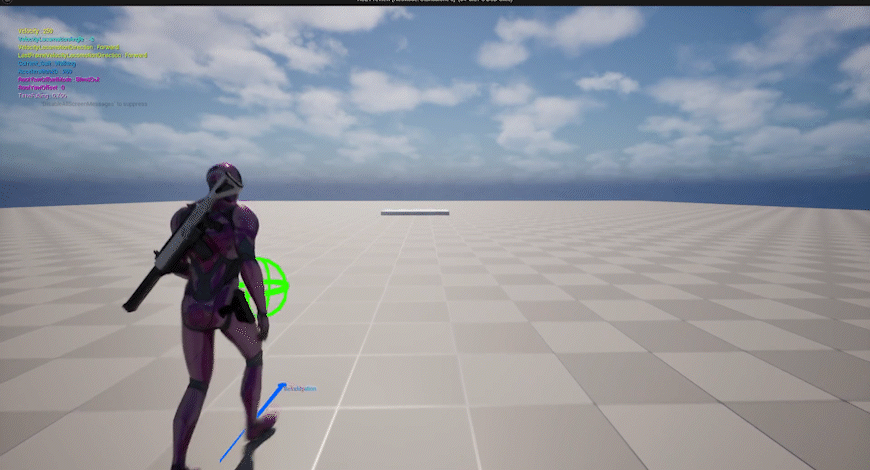
Crouching
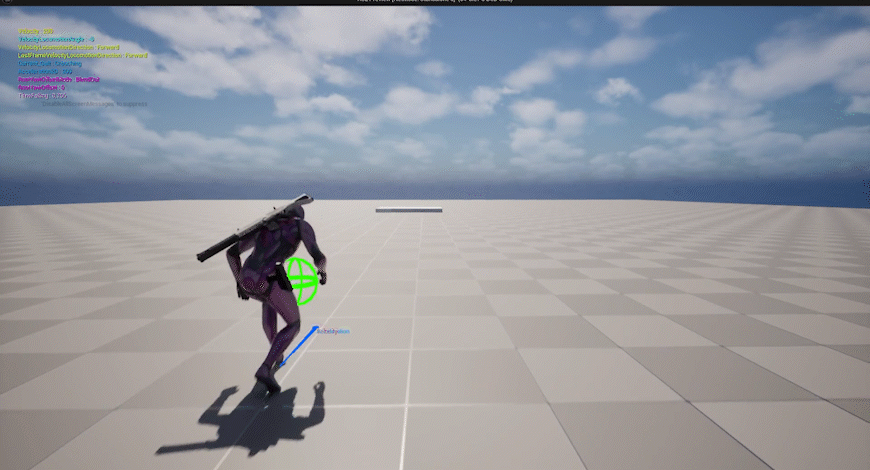
Jumping
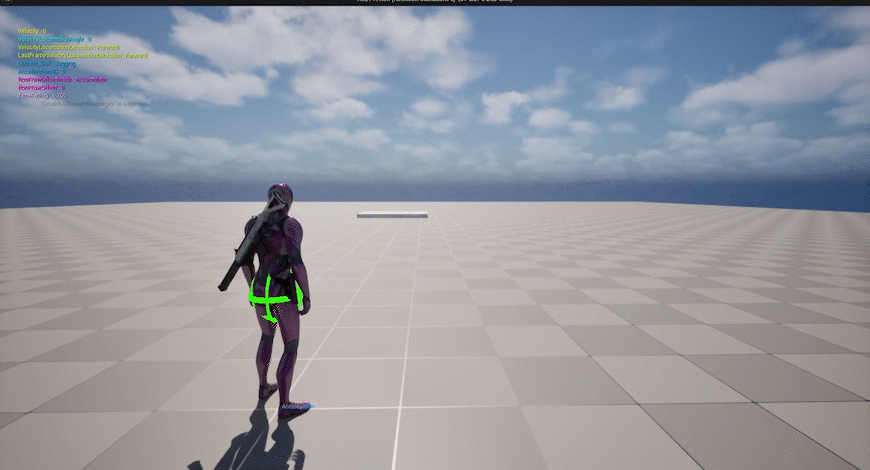
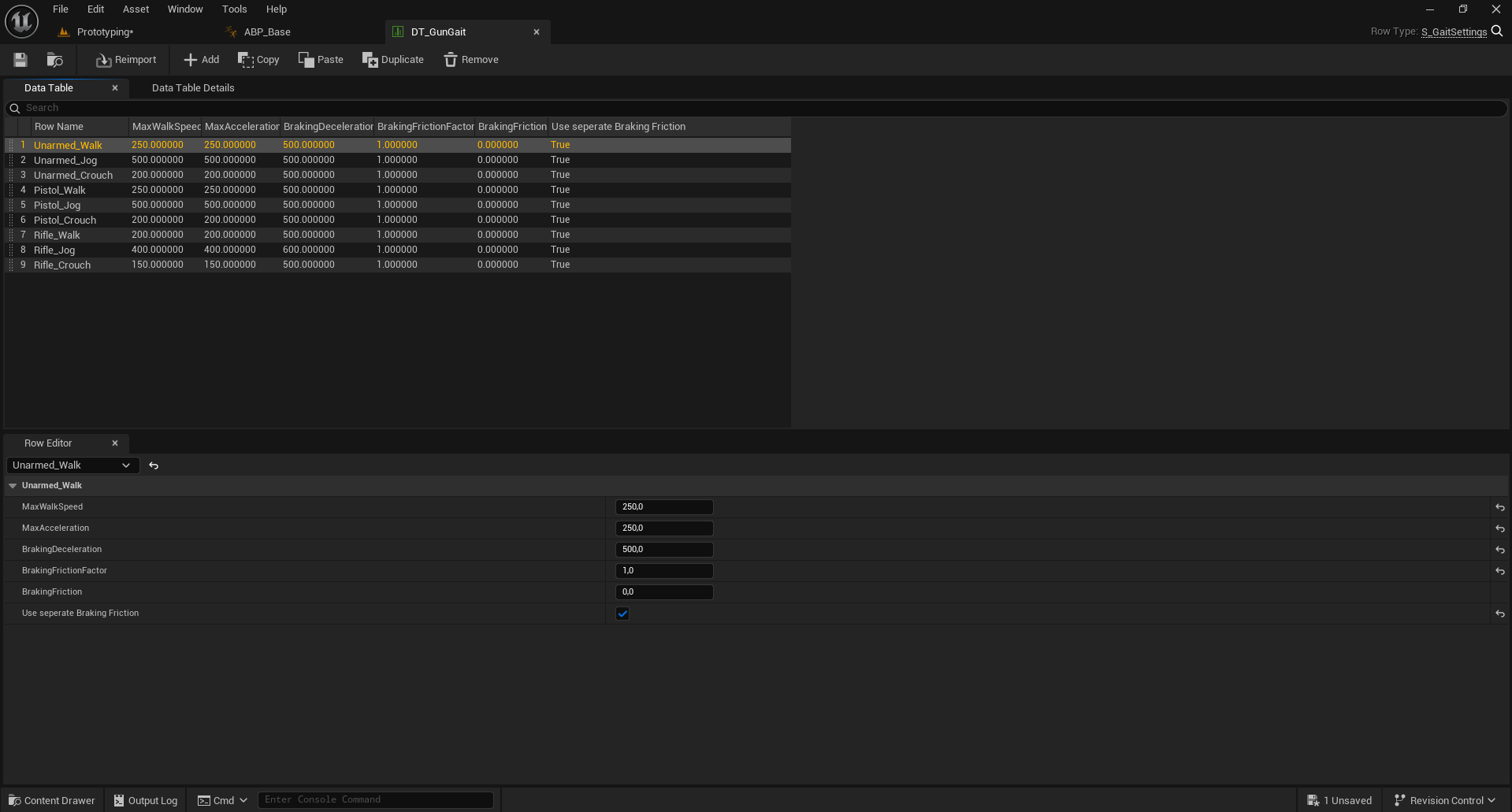
Character Weapons
Weapons and Aim Offset

Immersive Animation
This section focuses on advanced animation techniques that enhance character movement. Idle animations create subtle natural poses when stationary, while start animations ensure smooth transitions from standing to walking or running. Cycle animations handle continuous movement, adjusting to speed, and stop animations provide realistic deceleration for smooth halts. Pivot animations allow the character to change direction without interrupting movement, and lean additive animations add dynamic effects during turns or crouching. Turn in place animations enable fluid direction changes without moving, ensuring responsive and immersive gameplay.
Animation Blueprint Structure
The system is built around a central Main Animation Blueprint, which communicates with several Animation Layers. Each layer is managed through an Animation Layer Interface, allowing for clear separation of concerns and modularity. This setup enables the easy extension of character behaviors and animations.
For example, different weapon states like Unarmed, Pistol, and Rifle are handled through child layers specific to each weapon. This structure not only keeps the system flexible and scalable but also makes it easy to extend with new weapons or animations in the future without affecting the core animation logic.
By using this method, the animation system remains organized, allowing for smooth transitions and better management of the character’s movements across various states and equipment.
